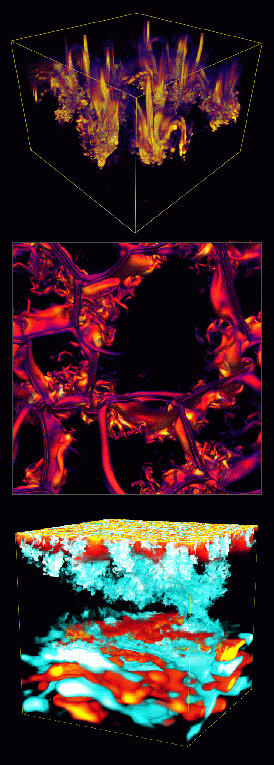


We have used the 3-D fully compressible HPS code within a planar domain to explore the effects of convective motions extending into a region of stable stratification positioned below the unstable layer, much as occurs at the base of the solar convection zone. This work is an important extension of our previous studies that dealt with an isolated unstable layer bounded above and below by impermeable boundaries. Such conditions are computationally convenient but not ideal for a model of a stellar convection zone, in which unstable domains are bounded by regions of stable, subadiabatic stratification arising from changes in thermal conductivities or ionization properties. The lower boundary condition in the planar model is relaxed by imposing a piecewise polytropic thermal conductivity profile as a function of depth such that the lower portion of the domain is stable to convection. The extent of convective overshooting is then influenced by the relative stability S of the subadiabatic stratification in the stable layer. These investigations provide clues as to what might be expected to occur in the stable layer of a global ASH simulation, should it be possible to operate in a similar parameter regime. For this reason, a knowledge of the penetrative behavior under the influence of rotation and with magnetic fields provides insight into the nature of the fully spherical solar tachocline.
These 3-D penetrative convection simulations show that the gradual deceleration of the strong coherent downflow structures by buoyancy braking in the stable layer, rather than a rapid turning at an artificial impenetrable boundary, has significant effects on the flow structure (Brummell, Clune & Toomre 1998). The functional form of the extent of penetration, relevent to stellar structure models, is only weakly dependent on the stiffness of the layer (Figure 1c), unlike in previous 2--D simulations (Hurlburt et al. 1994). The penetration depth also exhibits a very non-Gaussian distribution with time, with some major events occurring relatively infrequently. Such rare but dramatic instances may account for a significant portion of the overall mixing in contrast to continual small-scale entrainment and deposition. The transport properties of the penetrative convection are quite distinctive. One of the conclusions reached from nonpenetrative simulations is that the strong downflows transport a relatively insignificant portion of the net energy flux, due to a cancellation between their downward-directed kinetic energy and upward-directed enthalpy flux, leaving the small-scale interior turbulence to carry the majority of the convective flux. In contrast, penetrative convection, with the relative disconnectedness of the upflows and downflows makes the more active coherent downflow structures an equal participant in the convective transport (Figures 1a,b).
This page prepared by Nic Brummell, Laboratory for Computational Dynamics, University of Colorado.